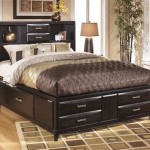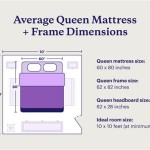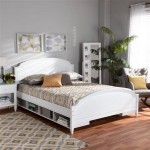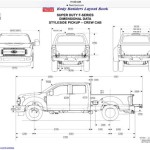Wood Frame Full Size Bunk Beds: A Comprehensive Guide
Full size bunk beds, characterized by their double-sized mattresses on both the upper and lower bunks, represent a versatile and space-efficient sleeping solution. When constructed with wood frames, these bunk beds offer a combination of durability, aesthetics, and practicality, making them a popular choice for various living arrangements. This article delves into the key aspects of wood frame full size bunk beds, exploring their advantages, common construction materials, safety considerations, and factors to consider when making a purchase.
Advantages of Wood Frame Full Size Bunk Beds
Wood frame full size bunk beds offer several distinct advantages over other materials and bunk bed sizes. These benefits contribute to their widespread appeal and suitability for a range of users.
One primary advantage is their durability and stability. Wood, particularly hardwoods like maple, oak, or birch, provides a robust framework capable of supporting significant weight. This inherent strength ensures the bunk bed can withstand the daily activities of children and adults alike, contributing to a longer lifespan and minimizing the risk of structural failure.
Furthermore, wood offers a wide array of aesthetic options. It can be stained, painted, or left in its natural state to complement diverse interior design styles. The natural grain patterns and warm tones of wood contribute to a more inviting and aesthetically pleasing sleeping environment compared to metal alternatives, which can sometimes appear sterile or institutional.
Another significant advantage lies in the comfort and perceived warmth associated with wood. Unlike metal frames, which can feel cold to the touch, wood provides a more comfortable and inviting surface. This contributes to a more restful and enjoyable sleeping experience, particularly in colder climates.
Finally, wood is a renewable resource, making wood frame bunk beds a more environmentally conscious choice compared to metal frames, which rely on more energy intensive extraction and manufacturing processes. Sustainable forestry practices ensure that the wood used in these bunk beds is harvested responsibly, minimizing environmental impact.
Common Wood Types and Construction Techniques
The type of wood used in the construction of a full size bunk bed significantly impacts its strength, durability, and overall aesthetic appeal. Different wood species offer varying levels of hardness, grain patterns, and natural resistance to decay.
Hardwoods such as maple, oak, birch, and beech are frequently employed in the construction of high-quality bunk beds. These woods are known for their exceptional strength and resistance to wear and tear. Maple, for instance, is prized for its tight grain and smooth surface, making it ideal for staining or painting. Oak, with its distinctive grain patterns and inherent durability, is a classic choice for furniture construction. Birch offers a lighter color and a more uniform grain, lending itself well to contemporary designs.
Softwoods, such as pine and fir, are also sometimes used in bunk bed construction, particularly in more affordable models. While softwoods are less dense and durable than hardwoods, they are still capable of providing adequate support, especially when properly treated and reinforced. Pine, for example, is a popular choice due to its affordability and ease of workability.
Construction techniques also play a crucial role in the overall quality and stability of the bunk bed. Solid wood construction, where the entire frame is made from solid pieces of wood, is generally considered the most durable option. However, solid wood can be more prone to warping or cracking due to changes in humidity. Wood veneer, where a thin layer of real wood is applied over a core of engineered wood, offers a more stable alternative that avoids the potential problems associated with solid wood while still providing the aesthetic appeal of real wood. Engineered wood products like plywood or MDF (Medium Density Fiberboard) are often used for panels and support structures, providing strength and stability at a lower cost.
Joinery techniques are also critical to the structural integrity of the bunk bed. Dovetail joints, mortise and tenon joints, and dado joints are all common methods used to securely connect the various components of the frame. These joints provide exceptional strength and prevent racking or wobbling over time. The use of screws, bolts, and other fasteners further reinforces the joints and ensures long-term stability.
Safety Considerations for Full Size Bunk Beds
Safety is paramount when selecting a full size bunk bed, especially when children are involved. Adhering to established safety standards and implementing preventative measures can minimize the risk of accidents and injuries.
One of the most important safety features is a sturdy and reliable guardrail for the upper bunk. The guardrail should extend at least five inches above the top of the mattress and should be securely attached to the bed frame. A solid ladder or staircase is also essential for safe access to the upper bunk. The ladder or staircase should be securely attached to the bed frame and should have wide, slip-resistant steps or rungs.
The mattress thickness should also be carefully considered. A mattress that is too thick can reduce the height of the guardrail, increasing the risk of falls. The manufacturer's recommendations for mattress thickness should always be followed. Furthermore, it is crucial to teach children about bunk bed safety rules, such as prohibiting jumping or playing on the beds and avoiding hanging objects from the frame.
Regular inspection of the bunk bed is also necessary to identify and address any potential safety hazards. Check for loose screws, bolts, or other fasteners, and tighten them as needed. Inspect the guardrails and ladder or staircase for any signs of damage or wear. Address any issues promptly to prevent accidents and ensure the continued safety of the bunk bed.
It is also recommended that all bunk beds be anchored to the wall to prevent tipping. This is particularly important in homes with young children or those prone to accidents. Wall anchors provide an extra layer of stability and significantly reduce the risk of the bunk bed falling over.
Finally, it is advisable to install a nightlight near the bunk bed to improve visibility, especially at night. This can help prevent falls when getting in or out of the bed. A soft, diffused light is preferable to a bright, harsh light, which can disrupt sleep.
Factors to Consider When Purchasing
Choosing the right wood frame full size bunk bed involves careful consideration of several factors to ensure it meets specific needs and preferences. These factors include the size of the room, the number of occupants, the desired style, and the budget.
The dimensions of the room are a crucial consideration. It is essential to measure the available space and ensure that the bunk bed will fit comfortably without overcrowding the room. Consider the height of the ceiling, as well, to ensure adequate headroom on the upper bunk. Leave sufficient space around the bed for easy access and movement.
The number of occupants and their ages should also be taken into account. Full size bunk beds are typically suitable for older children, teenagers, or adults. For younger children, a smaller twin size bunk bed may be a safer and more appropriate option. If the bunk bed will be used by adults, it is important to ensure that it is sturdy enough to support their weight.
The desired style of the bunk bed should complement the existing décor of the room. Wood frame bunk beds are available in a wide range of styles, from traditional to contemporary. Consider the color and finish of the wood, as well as the overall design of the frame. Choose a style that blends seamlessly with the other furniture and accessories in the room.
The budget is also a significant factor. Wood frame bunk beds can range in price from a few hundred dollars to several thousand dollars, depending on the type of wood, the construction quality, and the design. It is important to set a realistic budget and shop around for the best value. Consider the long-term durability and lifespan of the bunk bed when making a purchase decision. A higher-quality bunk bed may be more expensive initially, but it may ultimately be a better investment in the long run.
Also consider any additional features that may be desired, such as built-in drawers, shelves, or desks. These features can add functionality and storage space to the bunk bed, making it a more versatile and practical solution. Assess individual needs and preferences to determine which features are most important.
Finally, it is essential to purchase the bunk bed from a reputable retailer. Look for companies that have a proven track record of selling high-quality furniture and providing excellent customer service. Read online reviews and ratings to get a sense of the retailer's reputation. Before finalizing the purchase, carefully review the warranty and return policy to ensure adequate protection in case of any issues.

Urtr Walnut Full Over Bunk Bed For Kids Teens Detachable Wood Frame With Twin Size Trundle T 01608 L The Home

White Full Over Bunk Bed With Storage Modern Solid Wood Frame Ladder And 2 Drawers Can Be Divided Into Beds Size

Full Size Loft Beds Queen Bunk Room Doctor Furniture Co

Anbazar Full Over Bunk Beds With Trundle For Kids Teens Adult Detachable Wood Bed Frame Ff79 P The Home

Bespoke Wooden Bunk Bed For Adults And Children Endurance Beds

Umikk Kids Bunk Bed Solid Wood Frame Fácil De Montar Cama Móveis Madeira Personalizada B2brazil

Solid Wood Loft Bunk Beds Twin Full Size Bed With Desk Platform Frames

Honey Twin Full Bunk Bed Kimbrell S Furniture

Anbazar Gray Twin Over Full Size Bunk Bed With Slide Storage Drawers Wood Frame No Spring Box Needed Wkx44 Gy The Home

Free Shipping Euroco Wood Twin Over Full Bunk Bed With Drawers Convertible White Kids Storage Wal Com








